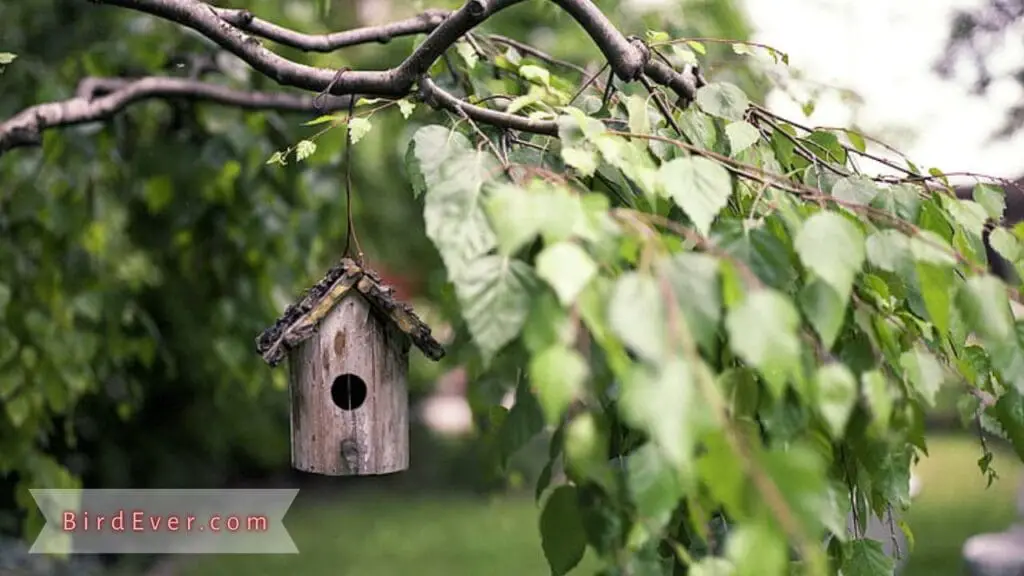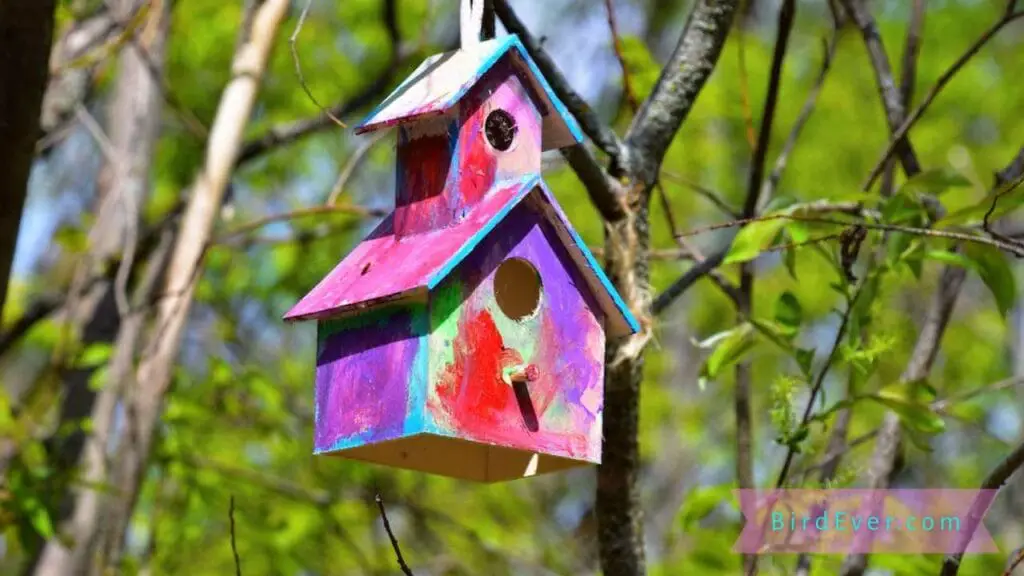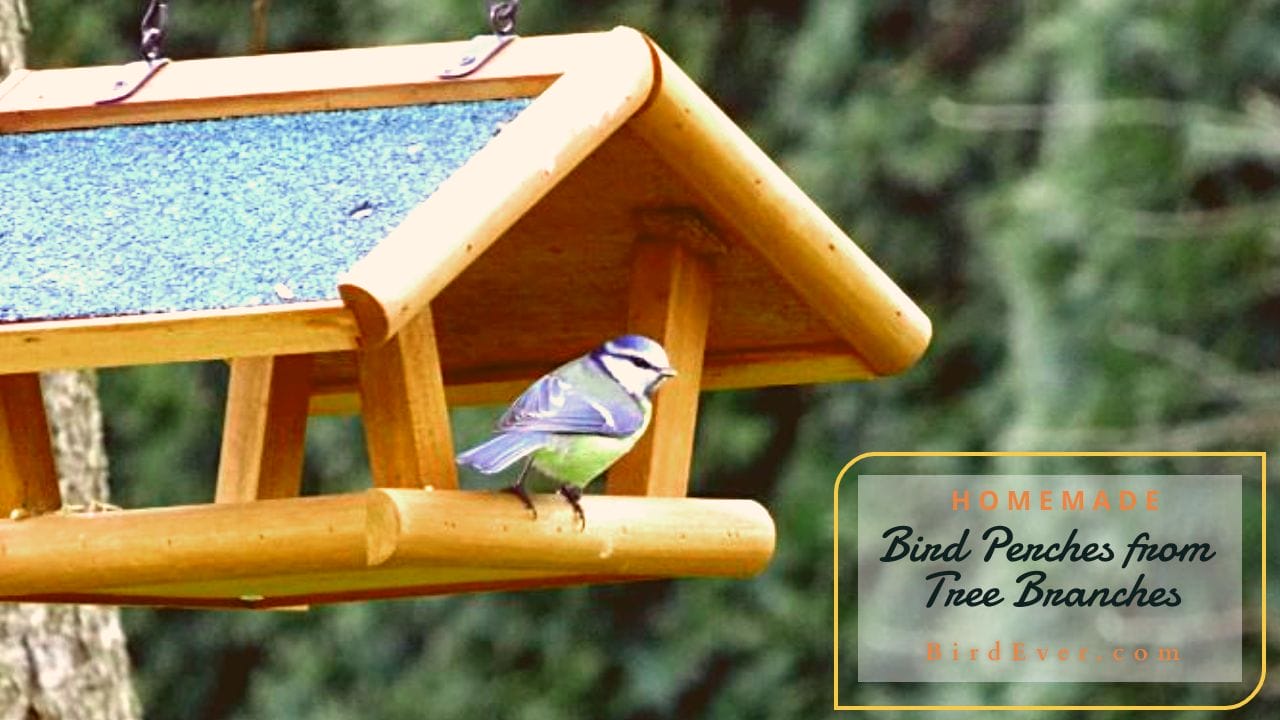Create Homemade Bird Perches from Tree Branches: DIY Guide
If you are a bird enthusiast or a pet owner, you know how important it is to provide your feathered friend with a comfortable and safe environment. One of the most essential elements in a bird’s habitat is the perch. Not only do perches offer birds an ideal place to rest, but they also serve as a means of exercise for their feet and beaks. In this blog post, we will discuss the importance and benefits of homemade bird perches from tree branches.
We will also provide a step-by-step guide on how to make your natural branch perches, as well as tips on how to attach them to your birdcage. Additionally, we will share some maintenance and cleaning tips to keep your perch with a natural branch hygienic and long-lasting.
So, let’s get started!
Benefits of Homemade Bird Perches

Homemade bird perches made from tree branches offer several benefits for birds.
Firstly, these natural wood perches provide a more authentic and comfortable environment for birds, as they mimic the branches they would encounter in their natural habitats. This can help reduce stress and promote overall well-being.
Secondly, homemade bird perches from tree branches offer a variety of textures and diameters, which can help exercise the muscles in a bird’s feet and promote foot health. Birds naturally grip different surfaces, and providing them with various pole sizes can help prevent foot problems such as arthritis or bumblefoot.
Moreover, DIY ideas of wood perches from tree branches can enhance a bird’s mental stimulation. Birds enjoy exploring and chewing on natural materials, so having a branch pole can provide them with an engaging and enriching experience.
Besides, using natural tree branches to create homemade bird perches is cost-effective and environmentally friendly. Instead of purchasing manufactured perches, repurposing fallen branches allows you to save money while also reducing waste.
Ultimately, homemade bird roosts from tree branches offer numerous benefits for birds in terms of comfort, foot health, mental stimulation, and sustainability. You can also watch the benefits video on YouTube.
Essential Materials for Creating Bird Perches
When it comes to creating homemade bird rods from tree branches, there are a few essential materials that you’ll need. First and foremost, select suitable tree branches made from natural wood like elm, birch, or red maple. This ensures that the resting place is safe and comfortable for your aviary friend.
Make sure to choose a branch with a diameter that fits comfortably within your birdcage as this will prevent any injuries or discomfort.
To securely attach the pole to the width of the cage, use stainless steel hardware such as hanger bolts and wing nuts. This not only provides stability but also prevents any rusting or corrosion over time.
It’s important to avoid using branches from toxic plants or those treated with pesticides or bleach, as these can be harmful to your feathered friend. Instead, consider adding bird toys or natural items like pine cones or willow branches to enhance the perch and provide enrichment for your bird.
By following these essential materials and considering additional elements to enhance the perch, you’ll create a comfortable and stimulating environment for your pet bird. The next step is to learn how to cut and size the tree branch for the perch, which we’ll explore in the next section.
Selection of Suitable Tree Branches

When selecting suitable tree branches for homemade bird poles, it is important to consider a few factors. First, inspect the branches carefully, ensuring they are free from fungi, lichen, or moss, as these can indicate rot or decay.
Afterward, choose branches with a smooth surface to prevent any harm to your bird’s feet. The length of the branch should be sufficient to extend from one side of the cage to the other, allowing your bird to rest comfortably.
Opt for branches with varying diameters, as this promotes foot exercise and prevents pressure sores.
Finally, check the branches are sourced from non-toxic trees and have not been exposed to pesticides or other chemicals. By following these guidelines, you can create safe and comfortable perches for your pet bird.
Tools Required for Perch Making
To create homemade bird perches from tree branches, you’ll need a few essential tools. Start by using a saw or pruning shears to cut the tree branch to your desired length.
Next, smooth out any rough edges or bark on the branch using sandpaper or a file. A drill with the appropriate drill bit is necessary for creating holes and installing hardware like a hanger bolt, screwdriver, plier, and wingnut.
Before installation, it’s important to clean and sterilize the branch using a mixture of clean water and vinegar. This will help ensure the perch is safe and free from any harmful bacteria.
In addition, consider adding optional tools such as bird feeders or foliage to enhance the perch and provide additional stimulation for your pet bird. You can find these tools at your local hardware stores.
Now that you have all the tools required, you can move on to the next step of creating a comfortable and engaging perch for your feathered friends.
How to Create Homemade Bird Perches from Tree Branches? Step-by-Step Guide

To create a bird perch from a tree branch, follow these step-by-step instructions.
Step 1
Step 1
Cut the branch to your desired length using a saw or pruning shears. Let the branch sit.
Step 2
Use sand paper or a file to smooth out any rough edges or bark. Aren’t sure about cleanliness? Then, thoroughly clean the branch with a mixture of water and vinegar.
Step 3
Create pilot holes in the branch using a drill and the appropriate drill bit.
Step 4
Install stainless steel hardware, such as hanger bolts and wingnuts, into the holes. This will provide a secure attachment for the perch.
Step 5
Make a DIY branch outside so that the bird to fly. Make them clean by using Fender washers and chlorine. Wash carefully the bleach residue and let it soak.
By following these simple steps, you can create a safe and comfortable perch for your pet bird.
Cutting and Sizing the Tree Branch
To cut and size the tree branch for your homemade bird perch, start by using a saw or pruning shears to trim it to the desired length.
Ensure that the branch extends across the cage, providing ample space for your bird to perch comfortably. Consider the diameter of the branch as well, choosing one that fits securely outside of the cage bars.
Once you have cut the branch, use sandpaper or a file to remove any rough edges or bark, ensuring that it is smooth and free from splinters to prevent injuries to your bird. With these steps complete, you are now ready for the next exciting part of creating your bird perch.
Cleaning and Sterilizing the Branch
To assure the safety and well-being of your birds, it’s essential to clean and sterilize the tree branch before installing it in their cage. Begin by thoroughly cleaning the branch using a mixture of water and vinegar.
Scrub the branch gently with a scrub brush to remove any dirt or debris. Rinse it with clean water to eliminate any residue. After cleaning, allow the branch to dry completely before inserting it into the bird cage.
This step is crucial as it helps eliminate any potential bacteria or pests that could be harmful to your beloved feathered friend.
By taking the time to clean and sterilize the branch, you’re providing a healthy and safe environment for your birds to enjoy their new perch.
Installation of Hardware into the Branch
To install the hardware into the branch for your homemade bird perch, follow a few key steps.
First, determine the appropriate location on the branch to install the hardware. This should be a spot that allows for easy access and comfort for your bird.
Next, create pilot holes in the branch using a drill and the recommended drill bit size and shape for the chosen hardware. These holes will ensure a secure attachment for the hardware.
Once these holes are created, insert hanger bolts into them, making sure they are firmly attached to the branch. To ensure stability, use wingnuts to tightly fasten the hanger bolts.
Before installing the perch in the bird’s cage, it’s important to test its stability to ensure it can safely support your bird.
New DIY Perch Tips

When attaching your new DIY bird perch, there are a few important tips to keep in mind.
First, check the position of the perch at a suitable height within the cage, allowing easy access for your bird. This will ensure that they can comfortably perch and move around.
Furthermore, it’s crucial to securely attach the perch to the cage bars to prevent any accidents or injuries. You can use hardware such as hanger bolts and wingnuts to fasten the perch tightly.
To create a comfortable environment for your bird, place the perch away from direct sunlight or drafts. This will help maintain a stable temperature and prevent discomfort.
Consider attaching multiple perches at different heights to promote exercise and foot health. This allows your bird to engage in natural movements and prevents muscle atrophy.
Lastly, it’s important to regularly monitor the perch’s condition and stability. Make any necessary adjustments or replacements to ensure your bird’s safety and well-being.
Also read: How to Clean Bird Perches?
FAQs
You might be interested in learning the answers to a few more frequently asked questions about handmade bird perches fashioned from tree branches. So let’s read.
Which wood is safe as perch wood?
Some bird-safe wood branches include apple, pear, willow, and birch. These types of wood are generally non-toxic and safe for birds to chew on.
However, it’s crucial to avoid using branches from toxic trees such as oak or cedar, as they can be harmful to your feathered friend.
Always do thorough research and consult with avian experts to ensure the branches you choose are safe trees for your bird.
Which tree branches are best for making bird perches?
Giving birds non-toxic, cleaned, and disinfected branches like those from apple, elm, ash, maple, manzanita, or willow can serve as perches that are both practical and aesthetically pleasing.
Are natural leaves best for parrots to perch on?
Natural leaves are generally considered the best option for parrots to perch on. Parrots have strong beaks and feet that are designed to grip onto tree branches in the wild. Perch with natural twigs provide a more varied and stimulating texture for them to grip onto compared to man-made perches.
It is crucial to avoid branches that are toxic to birds and ensure they are clean. Remove the bark or sharp edges that could potentially cause harm.
What’s more, providing parrot perch of different diameters and heights will help keep your parrot’s feet healthy and provide them with much-needed exercise.
What’s the verdict on concrete perches?
Concrete perches can be a controversial topic among bird owners and experts. Others say that concrete perches help keep birds’ nails trimmed, while others believe they can cause foot problems and discomfort.
Vet generally recommends providing a variety of perch materials for your bird, including natural twigs, rope perches, and even wooden dowels. This allows them to choose the perch that is most comfortable for their feet.
If you do choose to use concrete perches, make sure they are properly textured to prevent slipping and regularly inspect them for any signs of wear or damage.
Is it safe to use wooden dowels as a homemade roost for birds?
Wooden dowels can be used as a homemade roost, but caution should be exercised. Wooden dowels provide a solid and stable surface for birds to perch on, but they lack the texture and variation that natural lids offer.
It is important to choose a dowel that is the appropriate diameter for your bird’s feet. A perch that is too thick or too thin can cause discomfort and foot problems over time.
Besides, regularly inspect the wooden dowel for any signs of wear or damage. Splintering or rough edges can be hazardous to your bird’s feet and overall well-being.
Does a wild bird sit on a nestling spot?
Birds like kommentare, beschreibung, cockatoo, cockatiel, transkript etc fond of sitting on a nestling rod inside at night. To learn more you can watch the bird aviary video.
Key Takeaway

Creating homemade bird perches not only provides a natural and stimulating environment for your feathered friends but also offers numerous benefits.
By using suitable tree branches and essential materials, you can create perches that cater to your bird’s needs. Follow our step-by-step guide for creating a bird perch, ensuring proper cleaning and sterilization. Attach the perch securely to the bird cage and maintain it regularly to ensure the well-being of your bird.
However, wood splitting during the perch-making process can be a concern. To prevent this, choose branches with the appropriate thickness and consider using hardware to reinforce the perch.
Give your pet avian friend a comfortable and enriching space with homemade perches. Give them a good one. Show off your birds love!
